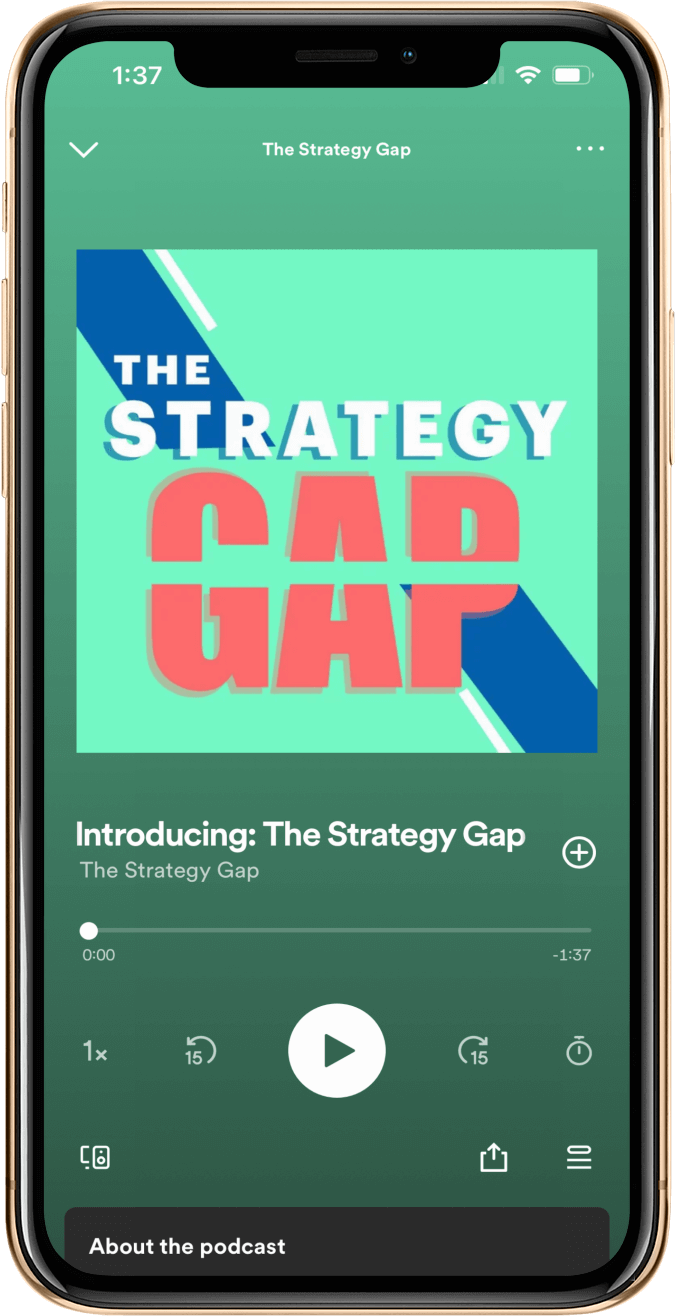Even a million-dollar idea cannot become successful without an iron-clad strategy — that’s why objectives should stand above ideas.
Daniel Goldstein, Director of Strategy and Operations at Array, has led a career spanning roles across the strategy space. A rich experience in consulting is common in the strategy space, and Daniel is no exception.
From cross-industry consulting with Accenture, Daniel found his niche. His team became akin to a strategy SWAT team, entering both Fortune 500 organizations and startups to help them rapidly and effectively find new revenue streams and scale their business.
Daniel shares his insights into prioritizing, placing objectives over ideas, adaptability, and more.
Objectives over ideas
“At some point, someone coined a phrase saying ideas are worth a million bucks, but they really aren’t. You have a lot of million-dollar ideas in theory, but it’s a matter of how you prioritize and execute them,” Daniel says.
When company culture becomes fixated on individual credit for ideas, progress is ground to a halt.
Creating a thorough talent selection process is only part of the puzzle. Creating a culture of prioritization of outcomes must start within the organization itself — and that begins with selecting and sticking to a framework that works in your industry and particular business.
Building a framework for turning ideas into objectives that build both customer and business value is crucial.
Prioritization: DVF framework
There are millions of different frameworks available to adapt and utilize in your business. A simple Google search places more than twenty styles at your disposal.
Daniel has found the framework that resonates most with him is the DVF framework, one that has been in popular use since the 90s.
With the central themes of desirability, viability, and feasibility, the DVF framework works to drive the right conversations. By taking ideas at the surface level and deep-diving into them, the DVF model pushes teams to think of ideas in a more holistic manner — leading to visible progress and positive outcomes.
Through quantitative and qualitative measurements and open conversations, companies can utilize the DVF model to build ideas into a complete, all-encompassing picture — ensuring the decision to trash an idea or push for a full launch is in the best interest of the entire organization.
Desirability
The desirability aspect of the model poses questions such as:
- What is our differentiator? What makes us stand out amongst our competitors?
- Is our product something our clients actually want or need?
By looking at your business from the consumer perspective, ideas become pathways to reach the pipeline.
Viability
The viability portion poses questions such as:
- What is the economic opportunity from both a revenue and profitability perspective?
- What is the potential ROI?
Viewing ideas as either financial motivators or financial inhibitors, teams can select objectives that lead to prosperity.
Feasibility
The feasibility side of the DVF model poses questions such as:
- How many team members will be required to meet this goal?
- How much strain will this put on resources?
Feasibility covers concerns from the operational and technical perspective.
Willingness to change and be adaptable
One of the biggest challenges companies face that hinders their growth is the inability for leaders to adapt. Instead, leaders decide to stick to the course they planned for, and, thus, fail when the tide changes.
The good companies (and the good leaders in those companies) are finding ways to adapt their focus to fit the needs of their organization and their customers.
For instance, say a company historically placed a low amount of weight on the viability aspect of decision-making. They are now tackling issues concerning burnout rates and profitability. If the same focus is held, their issues will never resolve.
If they adapt, however, and place a much greater emphasis on viability, they could see their problems dissolve.
Constantly adjusting, adapting, and changing to meet new needs and challenges is crucial for survival and seeing positive outcomes.
It’s important to remember the framework is not an absolute. It is, instead, a tool to drive conversations. Driving focus and pushing for output is key.
Interested in learning more? Listen to our full conversation with Daniel, where we take a deep dive into these topics and more, such as finding a framework that fits your company’s needs, keeping output as the top priority, building a strategy that will push your business forward, and more. Listen on Apple Podcasts, Spotify, or your favorite podcast player.
Listen to The Strategy Gap
A podcast about the space between savvy strategy and practical execution, including everything that can go wrong on the way.




